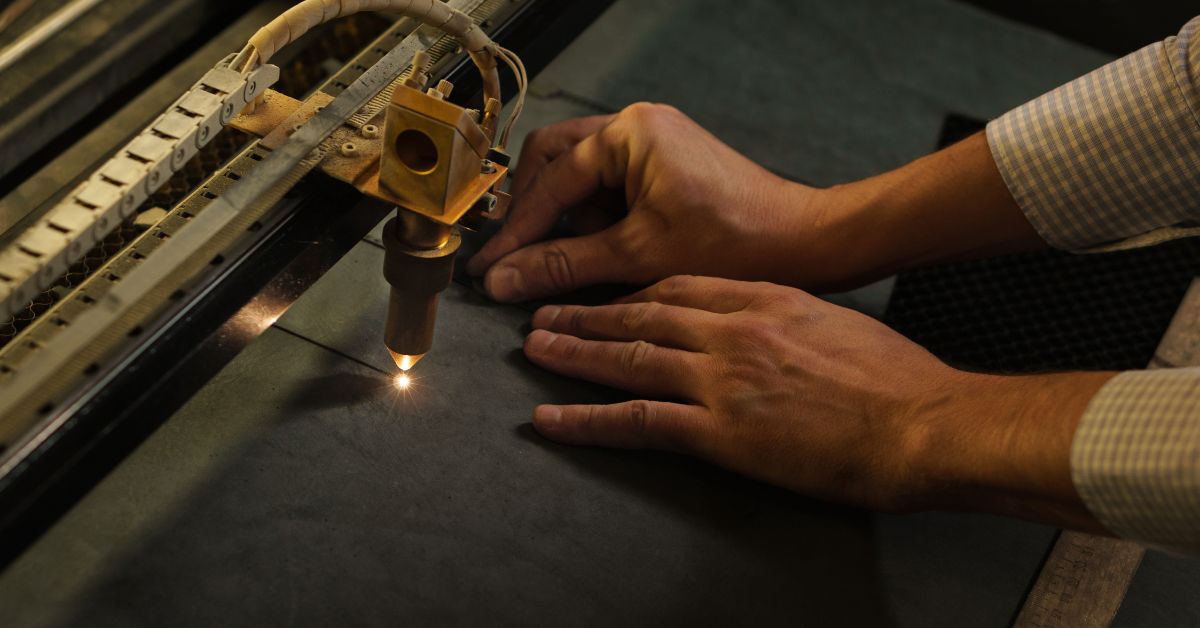- 01562744788
- enquiries@central-profiles.co.uk
- Mon - Fri: 8am - 5pm

Cutting is a method for separating sheet metal components using thermal energy. The work material is heated to a degree where it melts or vaporises during the cutting process by the laser beams’ concentration of light there. Once the laser beam has crossed the surface, the cutting process begins, redirecting the laser beam at the points determined according to the selected geometry until the material is completely separated.
Pressurised gas (oxygen, nitrogen, or CO2) is utilised to extract the finished material after the cutting process, which is completed using a specialised and highly technical apparatus.
Advantages of cutting with laser technology
The following stand out among the primary justifications for utilising laser technology in the operations of cutting sheet metal parts in the industrial sector:
High precision: Allows cutting of different geometric shapes, whether irregular, fine, or complex contours. It is appropriate for trimming or pre-cutting surplus material.
Versatility: It can be utilised to separate various organic and inorganic materials, such as metal sheets or substances that enable the fabrication of components with multiple steel geometries, stainless steel, or aluminium sheets.
Agility: The laser cutting process does not require cutting dies to manufacture parts; furthermore, it allows for silhouette adjustments.
Efficiency: After using the laser, it is not necessary to carry out subsequent processing of the piece, such as sealing or sanding, which saves time in the manufacturing process.
What materials can be cut with the Laser?
Laser technology allows for the processing of many plastics, textiles, and organic or metallic materials.
Depending on the machinery and the material used, the object may be put through various operations, including cutting, engraving, marking, etc.
Metal materials and sheet metal parts can be processed using laser technology, including:
A clean and precise cutting process
This metal sheet and tube laser cutting technique use the laser as the main tool through a fully robotised drive. The mechanical pressure and contact on the material are eliminated, making cuts with great precision when using a laser directed through nozzles. With a precise system of mirrors and a focusing lens, the light beam is guided towards the machine’s cutting head. Once it comes into contact with the piece’s surface, it heats until it melts or vaporises. The beam follows the chosen silhouette and separates the material, thus generating exact cuts.
Parameters to consider
In metal laser cutting, different variables influence the process and the result:
The position and diameter of the focus will determine the intensity of the ray and the shape of the cut.
The power of the laser must establish the energy needed per surface, to overcome the point where the material begins to melt.
The diameter of the nozzle the shape and quantity of the gas jet will depend on this important parameter.
The operating mode allows controlling whether the laser is applied to the piece continuously or in pulses.
Cutting speed will vary depending on the type of material, its thickness, and the type of cut. A good fit is essential to avoid the appearance of roughness or burrs.
Gases and cutting pressures where different gases (such as carbon dioxide, oxygen, nitrogen, or argon) are applied through the nozzles with a variable force.
A good finish of the cut is achieved with laser cutting as details like “Teeth” marks in the cut from using other cutting technologies are eliminated or reduced to a minimum.
We started out in 1999 and have grown continually through an ongoing investment in machinery, software and people, even during the downturn.
© 2021 Central Profiles. All Rights Reserved. Website by Freestart Digital
